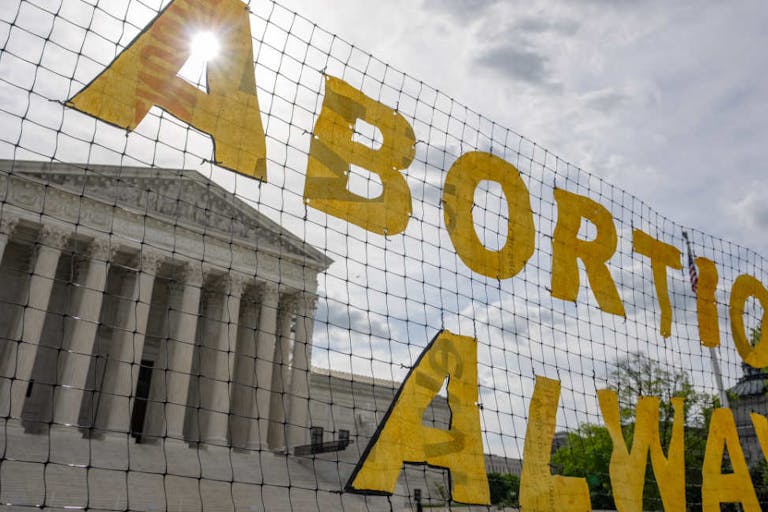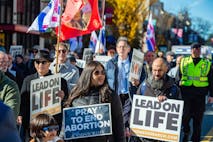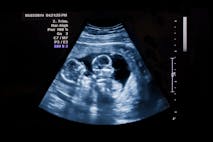
A growing number of Americans call themselves ‘pro-choice’ – but what’s really behind it?
Nancy Flanders
·
Pro-abortion justices overturned Texas law using debunked study
Many pro-lifers were astonished that the Supreme Court would overturn the Texas law requiring abortion facilities to be held to the same standards as other ambulatory surgical centers, and for abortionists to have hospital admitting privileges. It was shocking, considering that these standards are what used to be considered the norm, even for the abortion industry — even the National Abortion Federation told women that they should only get abortions from abortionists with admitting privileges, along with most of the medical industry, including the American Medical Association, the American College of Obstetricians and Gynecologists, and thirty others.
In short, this wasn’t some radical law pushing insane hoops for abortionists to jump through. They were merely holding abortionists, and their clinics, to the same standards as the rest of the medical industry. Nowhere else would it be considered acceptable for people to undergo medical procedures in facilities that were unregulated, with a physician that couldn’t obtain hospital admitting privileges. What makes abortion so special?
According to the Associated Press, one of the things that helped make up the justices’ minds and overturn the law was a study that allegedly proves that more women have been trying to administer self-abortions since the law passed.
The biggest court ruling affirming U.S. abortion rights in a generation scolded Texas lawmakers for a lack of facts and vindicated Republicans’ wonky pest: A team of university researchers so prolific in their scrutiny of Texas women’s health laws that a state health official lost his job for collaborating with them.
This week’s dismantling of Texas’ restrictive abortion law ended a fight waged not just on ideological grounds but also in spreadsheets tabulated by a University of Texas research team that analyzed the law’s impact on everything from rural abortion access to Twitter traffic. The restrictions required doctors who perform abortions to have admitting privileges at nearby hospitals and forced clinics to meet hospital-like standards.
U.S. Supreme Court Justice Stephen Breyer alluded to the Texas Policy Evaluation Project’s findings in his data-heavy majority opinion Monday. Among some academics, the group’s barrage of research published since the law passed in 2013 was unrivaled, pushing into the public arena suggestions that more women may try ending their own pregnancies or were driving farther to get abortions.
There’s just one problem with using this study as proof that the law needed to be overturned: it’s been thoroughly debunked. The deeply flawed study was conducted by the Texas Policy Evaluation Project (TxPEP), and claimed to find that somewhere between 100,000 and 240,000 women tried to give themselves abortions over the past five years. The study was riddled with errors, though.

The researchers never determined when these women allegedly tried to give themselves abortions. They also never determined where the women were living when the self-abortion attempts took place, either. The self-abortions could have taken place 40 years ago in Central America, and yet the researchers include that in a sad attempt to smear Texas abortion laws.
They also didn’t compare self-abortion attempts in Texas, which has stricter abortion laws, to a state like, say, California, where abortion laws are remarkably lax. Finally, and most damning, the researchers got their numbers by asking women if they had ever tried to induce an abortion on themselves, but also if they thought any of their friends had — which is perhaps the most unreliable method of getting data ever.
On top of that, LifeNews pointed out that the numbers were surely exaggerated just based on the number of abortions in Texas alone — in 2011, there were 73,000 abortions in Texas, before the laws took place. So the number of women attempting self-abortions alone, not even counting the number of abortions that took place in an abortion facility, was higher than the number of women having abortions, total, when the laws were less strict? That doesn’t make very much sense.
The study was clearly engineered to have results that would help the pro-abortion movement. So it’s no surprise that the pro-abortion justices on the Supreme Court would use it to justify overturning a common-sense law that would keep women safe.
Here’s what we know for a fact: there are plenty of clinics in Texas that operate under filthy, disgusting conditions. Some of the facilities closed after HB 2 were abhorrent abortion mills that should never have been allowed to be open. The plaintiff organization itself, Whole Woman’s Health, has a long history of health violations, including rusty spots on suction machines, unsanitary equipment, expired medications, infection control issues, and more. The clinics were closing not because the law put an unfair burden on the abortionists, but because they refused to comply with minimum health and safety standards. Why would anyone want to send women to an abortionist like that, who won’t keep their clinic in basic sanitary condition?
These justices let themselves be swayed by the pro-abortion agenda, rather than looking at the facts and do what was necessary to keep women in Texas safe. This was not a win for women.
Live Action News is pro-life news and commentary from a pro-life perspective.
Contact editor@liveaction.org for questions, corrections, or if you are seeking permission to reprint any Live Action News content.
Guest Articles: To submit a guest article to Live Action News, email editor@liveaction.org with an attached Word document of 800-1000 words. Please also attach any photos relevant to your submission if applicable. If your submission is accepted for publication, you will be notified within three weeks. Guest articles are not compensated (see our Open License Agreement). Thank you for your interest in Live Action News!

Nancy Flanders
·
Investigative
Carole Novielli
·
Abortion Pill
Carole Novielli
·
Investigative
Carole Novielli
·
Investigative
Carole Novielli
·
Investigative
Nancy Flanders
·
Analysis
Cassy Cooke
·
Activism
Cassy Cooke
·
Pop Culture
Cassy Cooke
·
International
Cassy Cooke
·
Analysis
Cassy Cooke
·